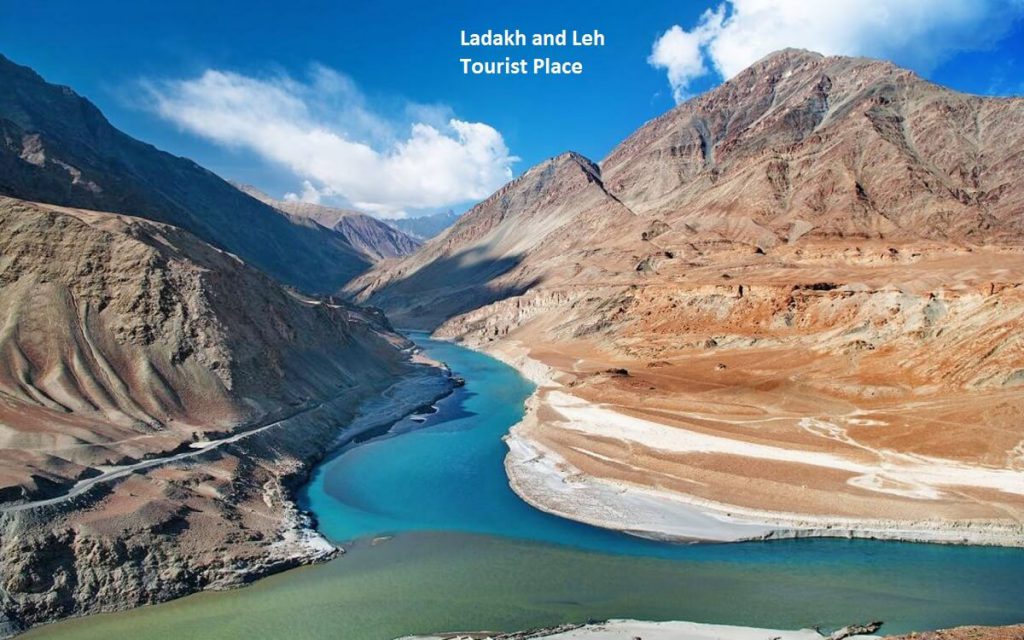-
Table of Contents
Ladakh and Leh
Have an inclination that keeping away from the rainstorm totally? Go to Ladakh! Leh, in the farthest far-flung corner of northern India, has turned into a prominent vacationer goal since Ladakh was opened to outsiders in 1974. Limited by two of the world’s biggest mountain extends and encompassed by elevated desert, its dry infertile scene brimming with notable Buddhist religious communities makes it a staggering incredible sight. Leh is cut off by street from whatever remains of the world for the greater part of the year, aside from June to October when the snow has liquefied, in spite of the fact that it’s open by flight all year. Endeavor to be there for the Hemis Festival.

-
Spiti, Himachal Pradesh
As of now been to Ladakh or simply need to go someplace progressively off-the-beaten-track in India? Attempt Spiti! This high-height world inside a world in remote Himachal Pradesh is flanked by Ladakh in the north, Tibet toward the east, Kinnaur toward the southeast, and the Kullu Valley toward the south. It’s solitary open from May to October, most helpfully from Manali (see photographs of the street from Manali to Spiti). A wide range of exercises is conceivable there, from yak safaris to volunteering in towns.
-
The Valley of Flowers National Park, Uttarakhand
The shocking scene of The Valley of Flowers, in northern India’s uneven territory of Uttarakhand, wakes up with the storm rain. This high-height Himalayan valley has around 300 unique assortments of blossoms, which show up as a brilliant cover of shading against a rugged snow topped foundation. The Valley of Flowers is just open from April to October as it’s canvassed in snow whatever is left of the year. It’s the ideal goal for those that adoration climbing and investigating nature, as it requires a 15 kilometer (9 mile) trek up a lofty mountain trail to arrive.
-
Kerala
Kerala Tourism has changed Kerala into a looked for after storm season goal. The Kerala Tourism Development Corporation has exceptional limited summer and storm bundles recorded on its site. The blustery season is perfect for getting an Ayurvedic treatment, on the grounds that the climate encourages the body’s pores to open up, making it generally responsive. Moreover, Kerala’s Periyar National Park stays open amid the stormy season, dissimilar to most other national stops in India. Snake watercraft races are likewise held in Kerala amid the rainstorm, alongside the state’s greatest celebration, Onam. In case you’re into culture, don’t miss The Blue Yonder’s Hop-On-Hop-Off Monsoon Trail along the River Nila.
-
Goa
Despite the fact that it won’t be conceivable to appreciate the sun, sand and surf amid the rainstorm, Goa has parts more to offer than simply the shoreline! There’s some dynamite landscape to investigate, lively rainstorm celebrations to participate in, the excite of wilderness boating to understanding, and angling to attempt your fortunes at also. What makes travel to Goa significantly increasingly alluring during this season are the specials offered by inns to bait clients. Extravagance that costs a little fortune amid the pinnacle season is considerably more reasonable amid the storm. Look at the costs of these five-star resorts in Goa, for instance. This is what to expect in Goa amid the storm season.
-
Meghalaya
On the off chance that you’re somebody who REALLY cherishes the rain, makes a beeline for Meghalaya in India’s upper east district. The “Dwelling place the Clouds”, this state is famous for being the wettest place on earth, and Cherrapunji specifically! The state has a plenitude of characteristic attractions, including old living root spans. This is what to see and do in Meghalaya. Try not to miss the three-day Beh Deinkhlam celebration of the Pnar clan, which happens in mid-July in the Jaintia slopes.
-
Western Ghat Mountains
Another prominent goal for rain sweethearts, the Western Ghats wake up in the rainstorm season. They state the grass truly is greener there! This sloping reach runs parallel toward the western shoreline of India, from close to the fringe of Gujarat and Maharashtra the distance to Tamil Nadu. It’s a UNESCO World Heritage Site and biodiversity hotspot. Amid the storm season, the Western Ghats draws in gutsy rainstorm trekkers, who wouldn’t fret the tenacious rain, mud and parasites (it’s conceivable to get 20 siphons on you just from a short 1-hour trek, so be ready!).
-
Bundi, Rajasthan
One of Rajasthan’s great visitor goals, Bundi is around three hours south of Jaipur. The city has specific intrigue amid the storm season when it’s particularly serene and uncrowded, and the lake swells. In contrast to numerous spots in India, Rajasthan doesn’t get exuberant rain. At most, storms generally last a couple of hours on end. Invest your energy meandering through suggestive old paths, past blue homes enhanced with wall paintings, or sitting in a housetop eatery neglecting the town. Different attractions incorporate rambling Bundi Palace with its popular smaller than usual artistic creations, sanctuaries, step wells, and a feeble post. Attempt and be there to get Teej Festival festivities, generally in August every year, highlighting a vivid road march.
-
Kanyakumari, Tamil Nadu
Need to pursue the rainstorm? Or on the other hand, simply encounter it as it vigorously touches base on the Indian territory? The town of Kanyakumari, in Tamil Nadu, is arranged at the southernmost purpose of India and is the primary spot the southwest rainstorm hits (in late May or early June). You’ll have an all-encompassing perspective of the tempest as it comes in from the ocean.